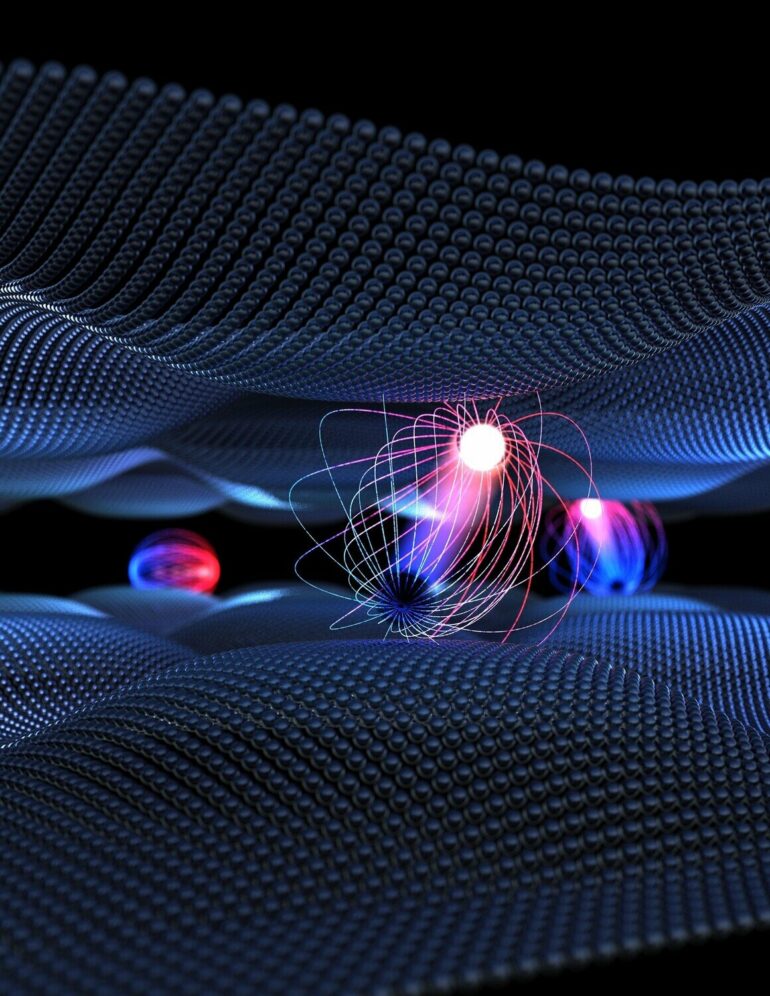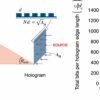An international research team led by the University of Göttingen has, for the first time, observed the build-up of a physical phenomenon that plays a role in the conversion of sunlight into electrical energy in 2D materials. The scientists succeeded in making quasiparticles—known as dark Moiré interlayer excitons—visible and explaining their formation using quantum mechanics. The researchers show how an experimental technique newly developed in Göttingen, femtosecond photoemission momentum microscopy, provides profound insights at a microscopic level, which will be relevant to the development of future technology. The results were published in Nature.
Atomically thin structures made of two-dimensional semiconductor materials are promising candidates for future components in electronics, optoelectronics and photovoltaics. Interestingly, the properties of these semiconductors can be controlled in an unusual way: like Lego bricks, the atomically thin layers can be stacked on top of each other.
However, there is another important trick: while Lego bricks can only be stacked on top—whether directly or twisted at an angle of 90 degrees—the angle of rotation in the structure of the semiconductors can be varied. It is precisely this angle of rotation that is interesting for the production of new types of solar cells. However, although changing this angle can reveal breakthroughs for new technologies, it also leads to experimental challenges.
In fact, typical experimental approaches have only indirect access to the moiré interlayer excitons, therefore, these excitons are commonly termed “dark” excitons. “With the help of femtosecond photoemission momentum microscopy, we actually managed to make these dark excitons visible,” explains Dr. Marcel Reutzel, junior research group leader at the Faculty of Physics at Göttingen University. “This allows us to measure how the excitons are formed at a time scale of a millionth of a millionth of a millisecond. We can describe the dynamics of the formation of these excitons using quantum mechanical theory developed by Professor Ermin Malic’s research group at Marburg.”
“These results not only give us a fundamental insight into the formation of dark Moiré interlayer excitons, but also open up a completely new perspective to enable scientists to study the optoelectronic properties of new and fascinating materials,” says Professor Stefan Mathias, head of the study at Göttingen University’s Faculty of Physics. “This experiment is ground-breaking because, for the first time, we have detected the signature of the Moiré potential imprinted on the exciton, that is, the impact of the combined properties of the two twisted semiconductor layers. In the future, we will study this specific effect further to learn more about the properties of the resulting materials.”
This research was published in Nature.
More information:
David Schmitt et al, Formation of moiré interlayer excitons in space and time, Nature (2022). DOI: 10.1038/s41586-022-04977-7
Provided by
University of Göttingen
Citation:
Developing the building blocks of the future for photovoltaics (2022, August 18)



